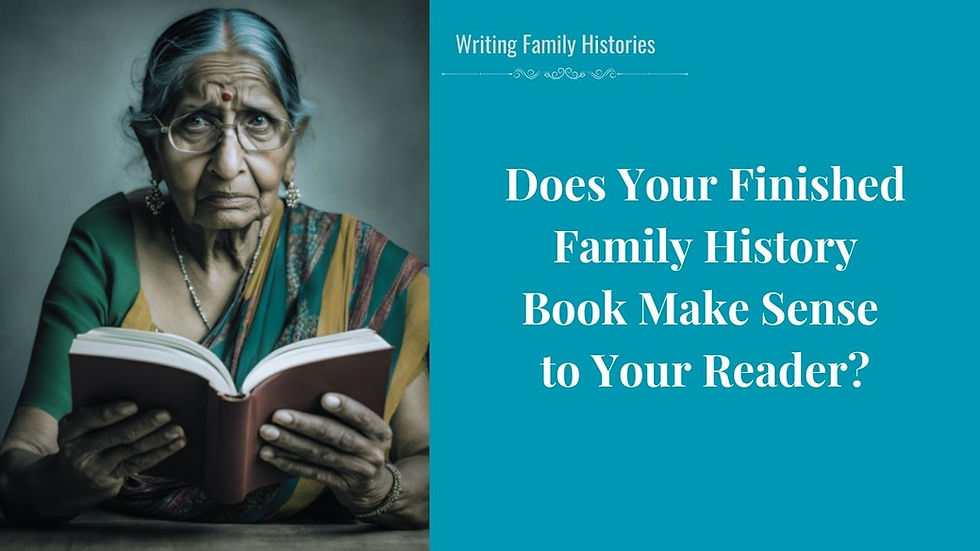How to Write About a Missing Father in Your Family History
- Devon Noel Lee

- Nov 13, 2017
- 3 min read
Updated: Oct 26, 2024

When writing about an ancestor, we start by including their parents. Unfortunately, parentage is not as simple as you provided the biological ingredients to create life. When attempting to record ‘who’s the daddy’ of your ancestor, who should you include?
Being a family history writing educator is such a blessing. The question student present is varied and challenging, as is the case of today’s inquiry.
How to write a family history about an absentee father?
My father’s biological father was never married to my grandmother. Grandma had two husbands. After her first husband died and before she married the second one, she had conceived and gave birth to my daddy, who was the product of an illegitimate relationship. When I write about my father at the time of his birth, marriage, etc. who do I include? Bio dad or his step-father, who was the only father he ever knew?
When writing about your ancestor, it’s essential to include the family context to the narrative. Let’s break this question into parts because the answer depends upon which life you’re detailing.
Let’s add some facts and then craft the story around the facts. (FYI… I made these names up, so if I stumbled upon a fact, that’s entirely by coincidence).
When we write about Joven’s birth, and we know who his biological father was, we can include that daddy.
Joven Grassley was to the of Treb Subrio and Martha Grassley. The couple never married, which is why Joven bears his mother’s last name. The father’s name was recorded in Martha’s personal files but not on Joven’s birth certificate. Treb was never a part of Joven’s childhood.
That takes care of bio daddy. We no longer need to include bio daddy in Joven’s story unless he turns up later, Joven receives an inheritance, or another critical need for Treb’s insertion is necessary. We’ve recorded the genealogical facts, but the family history will no longer include Treb.
Consider adding a sense of the emotional context
When we write about Joven, it’s important to share details about his mother. At that time, we can include that she was married to Lem prior to the Treb affair to give a sense of what Martha was feeling when Joven entered the world. Once that is covered, we don’t need to write about the missing father, Lem, any further.
When Martha held Joven in her arms, she certainly reflected upon the turns life had taken before this moment. She had been married to Lem Rocher from the time she was 18 to the age of 23. That marriage ended in divorce and without children. At some point, Martha became romantically involved with Treb Suburio. Joven was the product, but no marriage took place.
Martha was a single woman in 1921 with a newborn babe. If it were not for Jean-Scott Moraleno offering to marry a 24-year-old mother in 1922, Martha would have faced many difficult financial hardships.
This featurette on Martha covers the details of her relationships with an objective touch without casting judgment. And yet, we have made Martha relatable by including her trials. We can empathize with the challenges she would face when her out-of-wedlock babe was in her arms.
↪️ Do you want to write a family history book?
Grab your copy of this FREE Writing Guide:
From this point forward, the events of Joven’s life is intertwined with Jean-Scott, not Lem or Treb. When Joven marries, we can write the age of Jean-Scott and Martha and compare the age differences between mother and step-father and Jove and his bridge. We can include Jean-Scott’s death in Joven’s story, as that would invoke certain feelings in laying to rest his father, even if they didn’t share DNA.
Family Histories Are Messy – Be Truthful but Gentle
Our families don’t always conform to traditional genealogical forms. Biological contributions do not mean parenting. It’s up to us to record an accurate picture of relationships when charts and forms fall short.
If you have additional writing questions, include them in the comments section below.
.png)




Comments